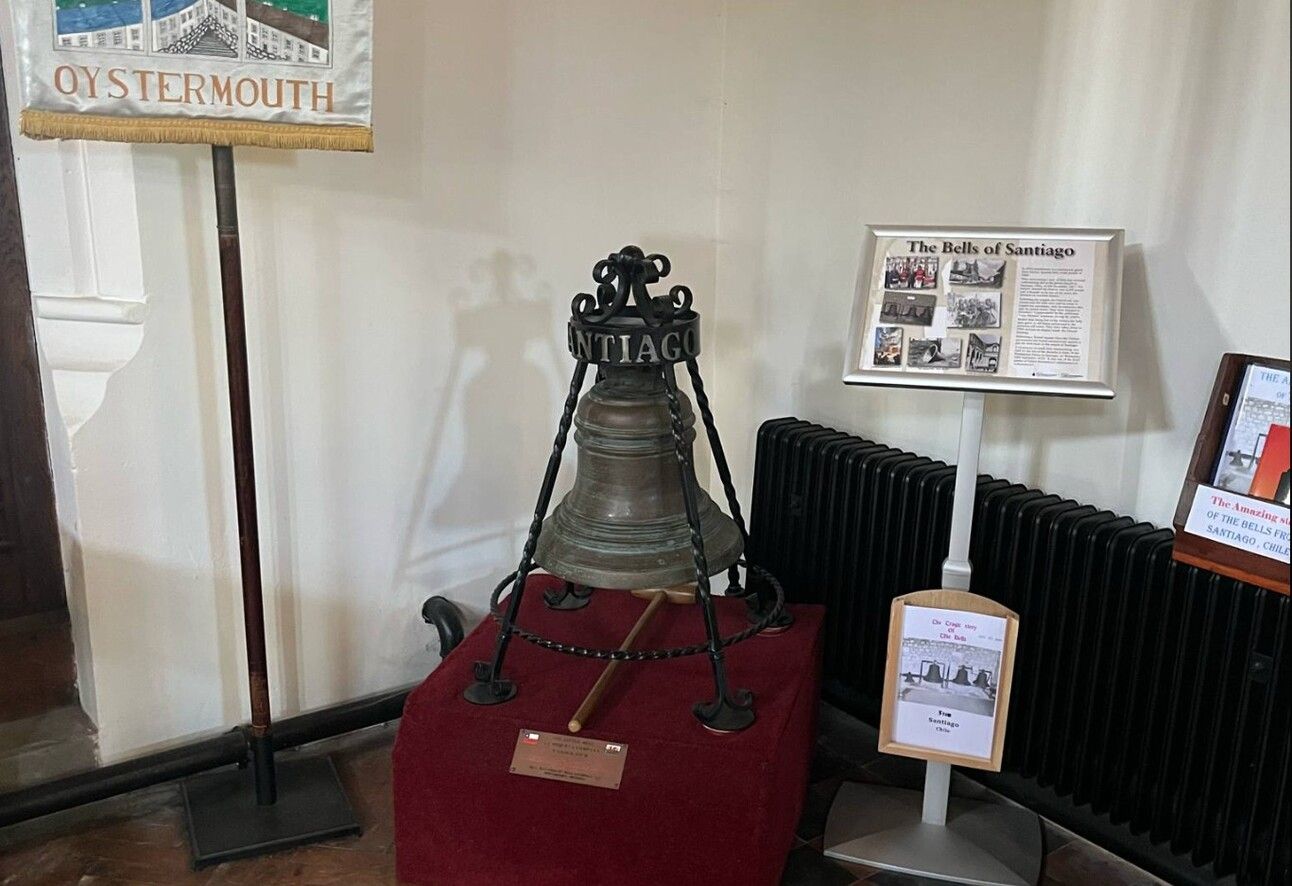For over 150 years, three Spanish bells rang out across Mumbles from All Saints Church. This week, read the tale of how Swansea's copper trade connected the city to one of history's worst tragedies, and why the three bells were at the centre of it.
Catch you on Sunday!
Andrew
A Tragic Fire in Chile

An image depicting the church fire | Image credit: Wikipedia
On December 8th, 1863, over 3,000 worshippers packed into the church of La Compañía de Jesús in Santiago, Chile, for a religious festival. The church was filled with thousands of candles, oil lamps, and other flammable decorations.
When a ceremonial candles accidentally ignited the church’s ornate decorations, the resulting inferno claimed more than 2,500 lives - mostly women and children. Their escape was hampered by narrow exits whose doors only opened inwards, and priests who fled through a vestry door, locking it behind them.
The New York Times reported on the fire as “a scene impossible to exaggerate, it cannot even be described... It is absolutely impossible to convey in words any idea of the harrowing spectacle of Tuesday night.”
It remains, reports say, the deadliest accidental building fire ever recorded. Eyewitnesses described how "the church was a furnace above and below" as the dome crashed down, followed by the spire.
The Bells Travel to Swansea
The church’s bells - thought to be of Spanish origin and dating back to 1753 - fell with the collapsing tower, but at least four survived the flames. They were elaborately cast and beautifully inscribed - the largest measuring over 32 inches in diameter and weighing several hundred kilograms.
After the tragedy, four of the bells were sold as scrap copper to renowned Swansea industrialist Graham Vivan of Clyne Castle, and shipped 7,000 miles to Swansea - then the world's "Copperopolis", nicknamed so due to the region’s dominance in copper smelting.
The bells likely travelled aboard ships called Cape Horners - vessels named for their perilous route around South America's southern tip that regularly sailed between Swansea and Chilean ports.
Three of the bells were donated to All Saints Church in Mumbles in exchange for the church’s medieval bells, during restoration work in the 1860s. The fourth bell went to St Thomas’ Church in Neath.
The Story Re-emerges
For nearly 100 years, the Santiago bells called local parishioners to worship at All Saints Church, until structural issues in the bell tower made it necessary to remove them in 1964. They were later mounted in a metal brace and placed in the church porch.
Then, in the 1970s, a tragic opera called "The Bells of Santiago" was performed at Oystermouth Castle, bringing new awareness of the story and sparking wider interest in the bells' remarkable history.
Canon Keith Evans of All Saints Church later began detective work, piecing together the full story from historical records - including a photograph of the of the bells taken in the church ruins just days after the disaster. He even wrote a book about the event, The Bells of Santiago.
Sending the Bells Home
In 2009, the Chilean government formally requested the bells' return to form part of a memorial for the fire victims, to mark the 150th anniversary of the fire.
The response from All Saints Church - and the local community - was unanimous - the bells should go home. As Canon Keith Evans described it, returning them was about "one community's generosity to another and the renewing of historic links between Swansea and Chile."
After removing the bells from All Saints Church with the help of “small fork lift trucks and some strong men”, HMS Portland carried them on a five-month voyage back to Chile in April 2010. A ceremony to mark their departure from Mumbles was attended by Chilean Ambassador, Tomás Müller Sproat.
In September of that same year, an emotional gathering in Santiago saw Chilean and Welsh officials unite as the bells were incorporated into a memorial for those who died. The event was held at the site of the original disaster, in front of Chile's Presidential Palace, as part of the country's bicentennial celebrations.
Legacy of the Bells

The bell at All Saints Church
A few years later in Wales, All Saints Church installed digital bells that faithfully recreated the sound of those from Santiago - you can listen to them ring here.
And if you visit All Saints Church today, look for the small bell on display that acts as a permanent reminder of this remarkable story - one that connects a small Welsh seaside church to one of South America's greatest tragedies.
Support the Scoop 🦢

If you've ever read the Swansea Scoop and thought "I never knew that!" or “I’m so glad this exists!,” you can now become a monthly member for just £2 (less than the price of a coffee) as a way to support our work.
It's the best way to help us out, and honestly makes our day every time someone joins 😊
No pressure at all - just a way to keep your local source for all things Swansea going strong.
A huge thanks to the 23 local legends who have supported us already - including our newest members, Mike L and Capel Cartref! 🙌
Andrew


